Sheep Ireland held its annual industry meeting last Thursday with three presentations on the latest research implemented into the national breeding programme and the €uro-Star indices for 2021.
This article summarises some of the most significant updates. Over 80% of LambPlus stock rams are now genotyped via the Sheep Ireland’s genomic service.
This has increased the accuracy of the evaluations produced in 2021, and Sheep Ireland intends to get closer to 100% over the next few weeks by continuing to engage with the breeders about outstanding information.
This ties in with the Sheep Ireland ram sale, which will take place on 28 August in Kilkenny this year. All rams at this sale will be at a minimum sire-verified and genomically tested. This will mean that the rams will hold the most accurate evaluations Sheep Ireland has ever produced for that sale.
Introducing a genomic in-breeding service, including a new trait for barrenness and updating the daughter’s milk trait, was the first presentation by Dr Thierry Pabiou.
There are now 50,000 genotypes on the Sheep Ireland database. The Sheep Ireland genomics service’s primary benefits include correcting pedigree/parentage errors and genomic evaluations. However, more and more benefits are being delivered, and the inbreeding coefficient is another example of this.
Why is the inbreeding coefficient important?
The impact of inbreeding has been known since the 1930s – for example, reduced fertility, lower growth rates, reduced milk yields and increased incidents of animal defects.
The global recommendation is not to exceed an inbreeding coefficient of 6.25%, particularly for pedigree breeding stock.
Sheep Ireland has been able to generate inbreeding coefficients to date based on the ancestry that has been recorded for that animal.
This works reasonably well as long as all the ancestors are recorded with no parentage errors.
Genomic inbreeding looks at the animal’s own DNA and calculates the percentage of inbreeding based on the number of identical SNPs the animal has.
Breeds that will gain the most from this service will be those with a shallow depth of recorded ancestry (ie, hill breeds). This service will allow breeders to genotype any ram to check that the animal is not inbred, even though the ancestry remains unknown.
Sheep Ireland has also launched a new inbreeding report for breeders to track the level of inbreeding in their flock based on their genomic results over time.
The next step will be to develop a genomic inbreeding checker (to check how closely two animals are related) and quantify the effect inbreeding is having by breed and by trait. However, these are sizable pieces of work that will take a few years to see through to implementation.
Barren rate
Thierry presented the latest trait to be added to the national breeding programme, called the barren rate.
Data on ewe barren rates has been routinely collected on commercial and pedigree flocks for several years now, with over 50,000 records with an average barren rate of 8.72% used in the analysis.
While the heritability is low at 8%, we can still make genetic gain in this trait, just at a slower pace than high heritability traits like growth rates.
This is an important trait to include in the index as barren ewes can significantly affect a flock’s profitability.
Finally, Thierry presented how the daughter’s milk trait has been updated in 2021.
Until now, daughter’s milk was calculated based on the lamb’s performance to five months of age. When this trait was first developed, there was insufficient data on lamb performance in the first six weeks.
Due to better data recording in pedigree flocks and with more commercial flocks now recording, this trait has been fine-tuned, with daughter’s milk now based on a lamb’s growth rates to the 40-day weight.
This work has also resulted in the heritability of this trait increasing from 7% to 13%, leading to higher accuracies and higher genetic gain in the years ahead.
The trait will continue to appear as normal in sales catalogues, but the data behind the trait value is now more reflective of the animal’s milking potential.
Thierry finished with the genetic trends for the most prominent performance recording breeds in Ireland, showing that all breeds are making genetic gain on both the replacement and terminal index, albeit at different rates (see Figure 1 and Figure 2).
Carcase data
Dr Noirin McHugh talked about using carcase data to predict days to slaughter more effectively.
Noirin started her talk by highlighting that production traits such as growth rates and carcase quality account for 42% and 62% of the replacement and terminal indices, respectively.
This means that the data and research on these traits are of enormous importance to the national breeding programme. Until now, Sheep Ireland only had access to a small number of carcase records for animals that were also performance recorded.
This made it difficult to accurately predict the future carcase quality of an animal as there wasn’t much data to validate the traits with.
What made this research possible was an exciting new development in 2021.
Sheep Ireland and the three largest processors (Dawn Meats, Irish Country Meats, and Kepak) have worked together to set up daily automatic data transfers between the processors and the Sheep Ireland database.
Setting up this data transfer infrastructure resulted in an additional 16,000 animals’ carcase records being made available for analysis across 38 commercial flocks (see Table 1).
The data also shows a strong correlation between days to slaughter, liveweight at 150 days and carcase weight.
This is positive for pedigree breeders who cannot collect direct carcase data on their animals as they are sold for breeding.
The evaluation can now better predict how animals would have killed out to a relatively high degree of accuracy using the weights, muscle and fat scanning information collected on the animal.
Greenhouse gas emissions
The third presentation was from Dr Alan Bohan, who discussed the research that has been undertaken to date, looking at the difference in greenhouse gas (GHG) outputs from flocks of high v low genetic merit.
This research combines previous research such as validating the €uro-Star indices, the Teagasc lamb production model and the life cycle assessment.
By comparing the performance of one-star flocks and five-star flocks, this research has shown that five-star flocks are more efficient, as they produce more lambs from fewer ewes.
Based on this analysis, the one-star ewes had an average net profit of €34/ewe compared to €46/ewe for the five-star ewes.
What effect is this having on the environment is becoming a more common and more important question.
Assessment
Taking this performance information and putting it through the Teagasc life cycle assessment model, the carbon dioxide equivalent GHG output was calculated for a one-star and five-star flock.
The results showed that while there was no significant difference in total GHG outputs between the flocks, the five-star flock produced significantly more lambs and, because of this, the five-star flock produced 5% less GHG compared to the one-star flock per kg of carcase produced.
Alan concluded by saying that more work is needed in this area and further refinement to bring the models closer in line with the national average. However, this is a great first step.
This meeting was recorded and is available to watch on www.sheep.ie along with all the presentations from the day.




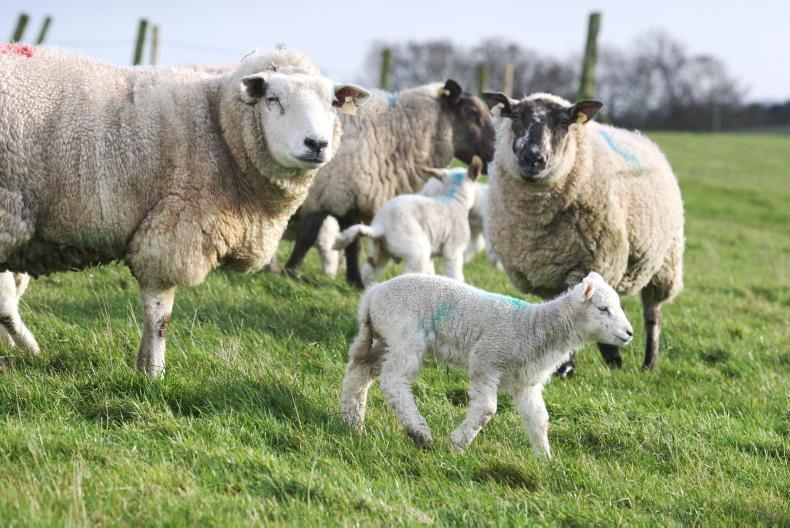
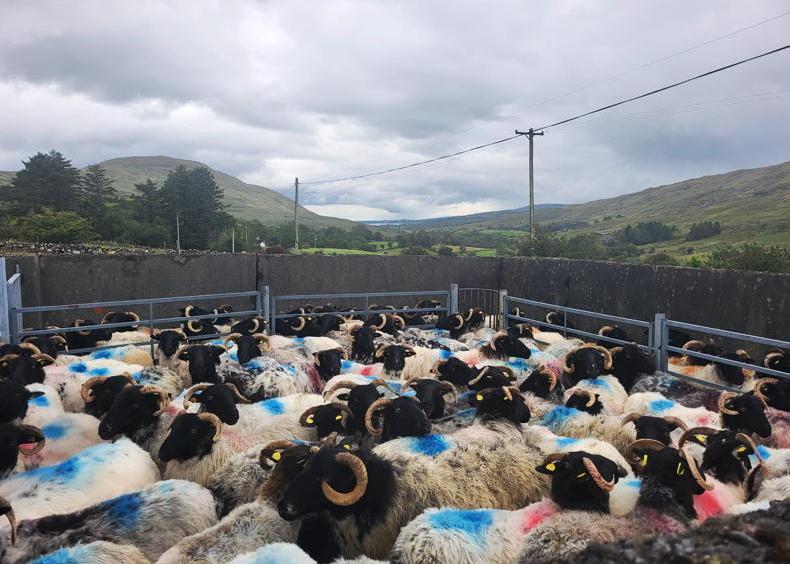

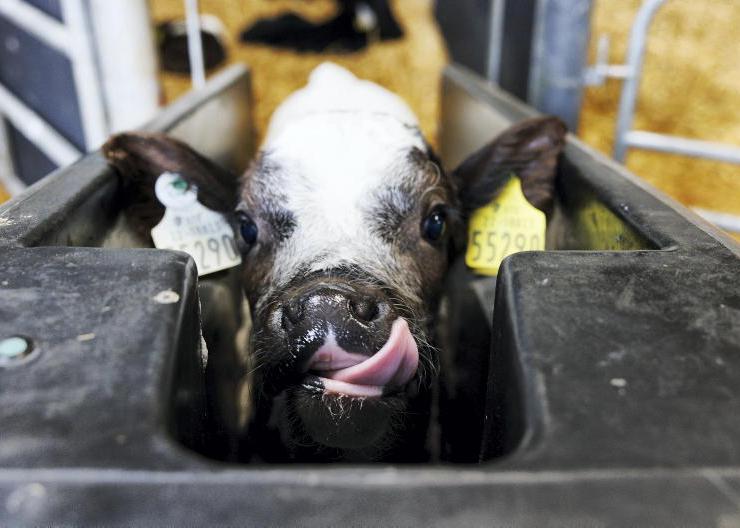
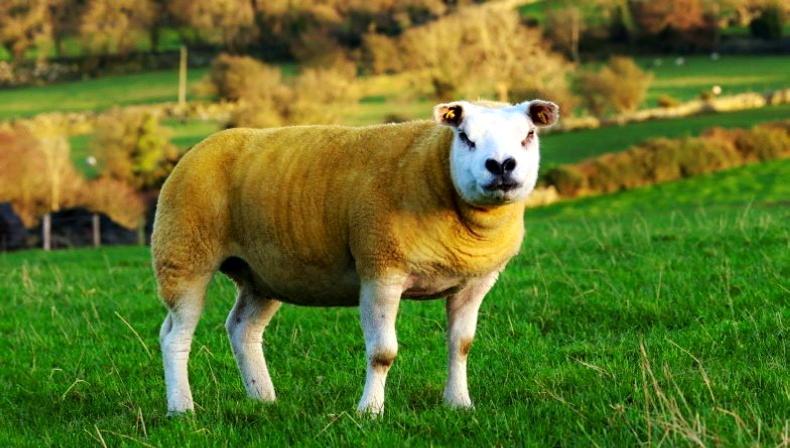
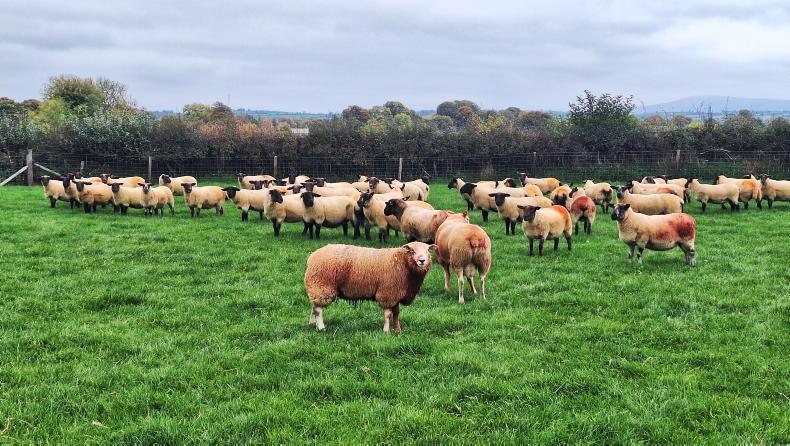
SHARING OPTIONS